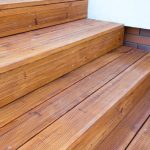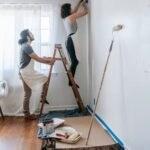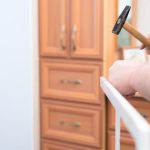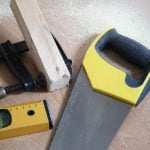Is your home feeling drafty and chilly during the winter or uncomfortably warm in the summer? You might be wondering, “how to improve my home insulation?” The answer lies in understanding the importance of home insulation. Poor insulation not only impacts your energy bills but also affects your comfort. In this article, we will discuss the impact of poor insulation on energy bills and comfort, as well as the benefits of a well-insulated home.
Poor home insulation can lead to significant energy loss, causing your heating and cooling systems to work harder and resulting in higher utility bills. Additionally, inadequate insulation can create discomfort by allowing outdoor temperatures to penetrate inside, making it difficult for you to maintain a comfortable indoor environment. On the other hand, a properly insulated home can significantly reduce energy costs and enhance comfort levels throughout the year.
Before you can improve your home insulation, it’s important to assess your current insulation situation. This involves checking for insulation gaps and inefficiencies. We’ll provide tips on how to do this effectively, as well as emphasize the importance of seeking professional insulation inspections to ensure that all areas of concern are properly addressed.
In addition to understanding the impact of poor home insulation, it’s vital to choose the right insulation materials for your specific needs. With various options available such as fiberglass, cellulose, and foam insulation, we’ll explore the different types of materials and offer guidance on considerations relating to climate, budget, and environmental impact.
Assessing Your Current Insulation
When it comes to improving home insulation, the first step is to assess your current insulation situation. This is crucial in identifying any gaps or inefficiencies that may be contributing to higher energy bills and decreased comfort in your home. Here are some tips on how to effectively assess your current insulation:
- Check for drafts: Look for any noticeable drafts or cold spots around windows, doors, and other openings in your home.
- Inspect the attic and basement: These areas are common culprits for poor insulation. Check for any signs of moisture, mold, or inadequate insulation in these spaces.
- Consider a professional inspection: Hiring a professional insulation contractor to conduct an assessment can provide a more thorough evaluation of your home’s insulation needs.
It’s important to understand that even if your home has existing insulation, it may not be sufficient or properly installed. Conducting a thorough assessment will help you determine the necessary steps to improve your home’s insulation.
Remember that proper insulation not only increases energy efficiency but also enhances the overall comfort and air quality within your home. By investing time and effort into assessing your current insulation, you’ll be taking a proactive step towards creating a more comfortable living environment while saving on energy costs in the long run.
Choosing the Right Insulation Materials
When it comes to improving home insulation, choosing the right insulation materials is crucial for maximizing energy efficiency and comfort. Here are some considerations when selecting the best insulation materials for your home:
- Types of insulation: There are various types of insulation materials available, including fiberglass, cellulose, and foam. Each type has its own advantages and considerations, so it’s important to research and understand the differences before making a decision.
- Climate considerations: The climate in which you live can greatly impact the effectiveness of different types of insulation. For example, homes in colder climates may require different insulation materials than homes in warmer climates.
- Budget constraints: It’s important to consider your budget when choosing insulation materials. Some types of insulation may be more expensive upfront but provide long-term cost savings through improved energy efficiency.
- Environmental impact: For environmentally-conscious homeowners, considering the environmental impact of different insulation materials is essential. Some materials may have a larger carbon footprint than others, so it’s worth researching eco-friendly options.
By carefully considering these factors and consulting with a professional, homeowners can make informed decisions when choosing the right insulation materials for their specific needs. Ultimately, selecting the best insulation materials will contribute to a more energy-efficient and comfortable home environment.
Sealing Air Leaks
One of the most important aspects of improving home insulation is sealing air leaks. Common areas where air leaks occur include around windows and doors, electrical outlets, plumbing penetrations, and attic hatches. These leaks can contribute to a significant loss of heated or cooled air, leading to higher energy bills and decreased comfort within the home. It is essential to thoroughly inspect these areas for any gaps or cracks that may be allowing air to escape.
Techniques for Sealing Gaps and Cracks
Once the areas of air leakage have been identified, it is crucial to seal these gaps and cracks effectively. Depending on the size of the gap or crack, different materials may be used for sealing, such as caulk, weatherstripping, expanding foam, or insulation tape.
It is important to choose the appropriate material for each specific area in order to achieve a tight seal. Properly sealing these air leaks can not only improve energy efficiency but also enhance indoor comfort by preventing drafts and maintaining a consistent temperature throughout the home.
Regular maintenance and inspection are necessary to ensure that all potential sources of air leakage are properly sealed. By taking the time to address these issues, homeowners can significantly reduce their energy consumption and create a more comfortable living environment while also extending the lifespan of their HVAC systems.
Insulating Attics and Basements
Specific Tips for Insulating Attics and Basements
Insulating the attic and basement is crucial for maintaining a well-insulated home. These areas are often overlooked but can have a significant impact on energy efficiency and comfort. In the attic, proper insulation helps to prevent warm air from escaping during the winter and keeps the space cooler in the summer. Similarly, insulating the basement helps to maintain a consistent temperature in the lower levels of the home.
When insulating an attic, it’s important to consider factors such as ventilation, air sealing, and moisture control. Ventilation is essential for preventing moisture buildup, which could lead to mold and mildew issues. Proper air sealing is also crucial to prevent leaks that could compromise energy efficiency. In basements, insulation should be focused on exterior walls as well as any exposed ceilings.
Benefits of Properly Insulating Attics and Basements
Proper insulation in these areas not only contributes to energy savings but also improves overall comfort within the home. By preventing heat transfer through these spaces, homeowners can enjoy more consistent temperatures throughout all areas of their living space. Additionally, adequate insulation in these areas can help to reduce drafts and cold spots, creating a more comfortable environment for residents.
It’s important to note that when insulating these areas of the home, it may be necessary to comply with local building codes and regulations. Consulting with a professional insulation contractor or building inspector can provide valuable guidance in ensuring that the insulation meets all necessary requirements. Overall, addressing attic and basement insulation is an essential step toward improving overall home comfort and energy efficiency.
Upgrading Windows and Doors
Windows and doors play a crucial role in the overall insulation of a home. Poorly insulated windows and doors can lead to significant energy loss and decreased comfort. In this section, we will discuss the impact of windows and doors on home insulation, as well as options for upgrading to more energy-efficient materials.
Impact of Windows and Doors
Old or improperly sealed windows and doors can result in drafts, heat loss in winter, and heat gain in summer. This not only affects the comfort of the home but also leads to higher energy bills as heating and cooling systems work harder to maintain a constant temperature. Upgrading windows and doors is an essential step in improving overall home insulation.
Options for Energy-Efficient Windows and Doors
When considering upgrading windows and doors for better insulation, homeowners have several options to choose from. Energy-efficient windows typically have multiple glazing layers, low-emissivity coatings, gas fills between panes, and insulated frames, all of which help reduce heat transfer. For doors, choosing those with proper weather-stripping and insulation can also make a significant difference in preventing air leaks.
Other Considerations
In addition to selecting energy-efficient materials for windows and doors, it is important to ensure that they are properly installed. Proper installation plays a key role in maximizing their insulating properties. Homeowners may also want to consider other factors such as aesthetics, maintenance requirements, and the potential return on investment when choosing new windows and doors. By carefully considering these factors, homeowners can make informed decisions about upgrading their windows and doors for improved home insulation.
DIY Insulation Projects
When it comes to improving home insulation, there are several do-it-yourself projects that homeowners can undertake to enhance the efficiency of their living space. One of the simplest DIY insulation projects is sealing air leaks around windows, doors, and any other areas where there may be gaps or cracks.
This can be done with caulking or weather-stripping, both of which are readily available at most hardware stores. By addressing these air leaks, homeowners can prevent heat from escaping in the winter and from entering in the summer, ultimately reducing energy bills and increasing comfort.
Another DIY insulation project that can make a significant impact is adding insulation to the attic. Many homes lose a substantial amount of heat through their attics, so ensuring that this space is well-insulated is crucial for overall energy efficiency. Homeowners can opt for insulation materials such as fiberglass or cellulose and follow installation instructions carefully to maximize effectiveness. Additionally, insulating basement walls can also be a simple yet effective way to improve home insulation.
For those looking for more advanced DIY insulation projects, insulating hot water pipes and heating ducts can further contribute to energy savings. By wrapping pipes with foam sleeves or insulating heating ducts with specialized materials, homeowners can minimize heat loss while maximizing the efficiency of their heating systems. However, it’s important for individuals to research and understand proper installation techniques before embarking on more intricate DIY insulation projects.
Hiring a Professional Insulation Contractor
Home insulation plays a crucial role in maintaining energy efficiency and overall comfort within a home. Poor insulation can result in increased energy bills as heating and cooling systems work harder to maintain the desired temperature. Additionally, inadequate insulation can lead to discomfort due to drafts, uneven temperatures, and excessive noise from outside. On the other hand, a well-insulated home can significantly reduce energy costs, provide consistent indoor comfort, and contribute to a quieter living environment.
Before hiring a professional insulation contractor, it’s important for homeowners to assess their current insulation situation. This involves checking for any gaps or inefficiencies in the existing insulation. Common areas for inspection include attics, walls, basements, and crawl spaces. It is also advisable to have a professional conduct an inspection to accurately identify areas that may need improvement.
Choosing the Right Insulation Materials
When it comes to selecting the right insulation materials for a home, there are various options to consider. Fiberglass, cellulose, and foam are among the most common types of insulation materials available on the market. Factors such as climate, budget, and environmental impact should be taken into account when choosing the appropriate insulation material for a specific area of the home.
| Insulation Material | Key Considerations |
|---|---|
| Fiberglass | Durable and cost-effective; commonly used in attics and walls |
| Cellulose | Made from recycled paper; effective for dense packing in walls and attics |
| Foam | Provides high R-value; ideal for new construction or retrofitting existing structures |
Conclusion
In conclusion, improving the insulation of your home is a valuable investment that can have numerous benefits for both your finances and overall comfort. By addressing the various aspects of home insulation, from assessing your current insulation to choosing the right materials and sealing air leaks, you can make a significant impact on your energy bills and the coziness of your living space.
Properly insulated attics and basements, as well as upgrading windows and doors, also play a crucial role in maximizing the efficiency of your home.
Taking on DIY insulation projects can be a cost-effective way to improve your insulation, but it’s important to note that there are certain situations where hiring a professional insulation contractor is necessary. A professional can ensure that the job is done properly and help you navigate any potential challenges that may arise during the process.
In closing, it’s important for homeowners to realize the benefits of improved home insulation, not only for their own well-being but also for the environment. By making these changes to your home, you will not only enjoy reduced energy costs and enhanced comfort but also contribute to more sustainable living practices. So take action today – assess your current insulation, consider upgrades or repairs, and reap the rewards of a well-insulated home.
Frequently Asked Questions
How Can I Improve My Poorly Insulated House?
Improving a poorly insulated house can be done in several ways. One option is to add more insulation to the walls, attic, and floors. This could be done using materials such as fiberglass, cellulose, or foam insulation.
Another option is to seal any air leaks around windows, doors, and other openings to prevent heat from escaping. Additionally, upgrading windows and doors to more energy-efficient models can also help improve insulation in a poorly insulated house.
Can You Improve Insulation to Existing Walls?
Yes, it is possible to improve the insulation of existing walls. This can be accomplished by adding insulation material through techniques such as blown-in insulation or injection foam.
In some cases, exterior siding might need to be removed to access the walls for retrofitting with additional insulation. It’s important to consult with a professional to determine the best approach for improving the insulation of existing walls.
Why Is My House So Cold Even With Insulation?
If your house still feels cold even with insulation, there could be several reasons for this. It’s possible that there are air leaks in the home that are allowing heat to escape and cold air to enter.
Insufficient or deteriorating insulation could also be a factor in keeping your house cold despite efforts to insulate it. Furthermore, outdated HVAC systems and poor ventilation might contribute to the chilliness of a house even with adequate insulation measures in place.

I’m thrilled to have you here as a part of the Remodeling Top community. This is where my journey as an architect and remodeling enthusiast intersects with your passion for transforming houses into dream homes.





